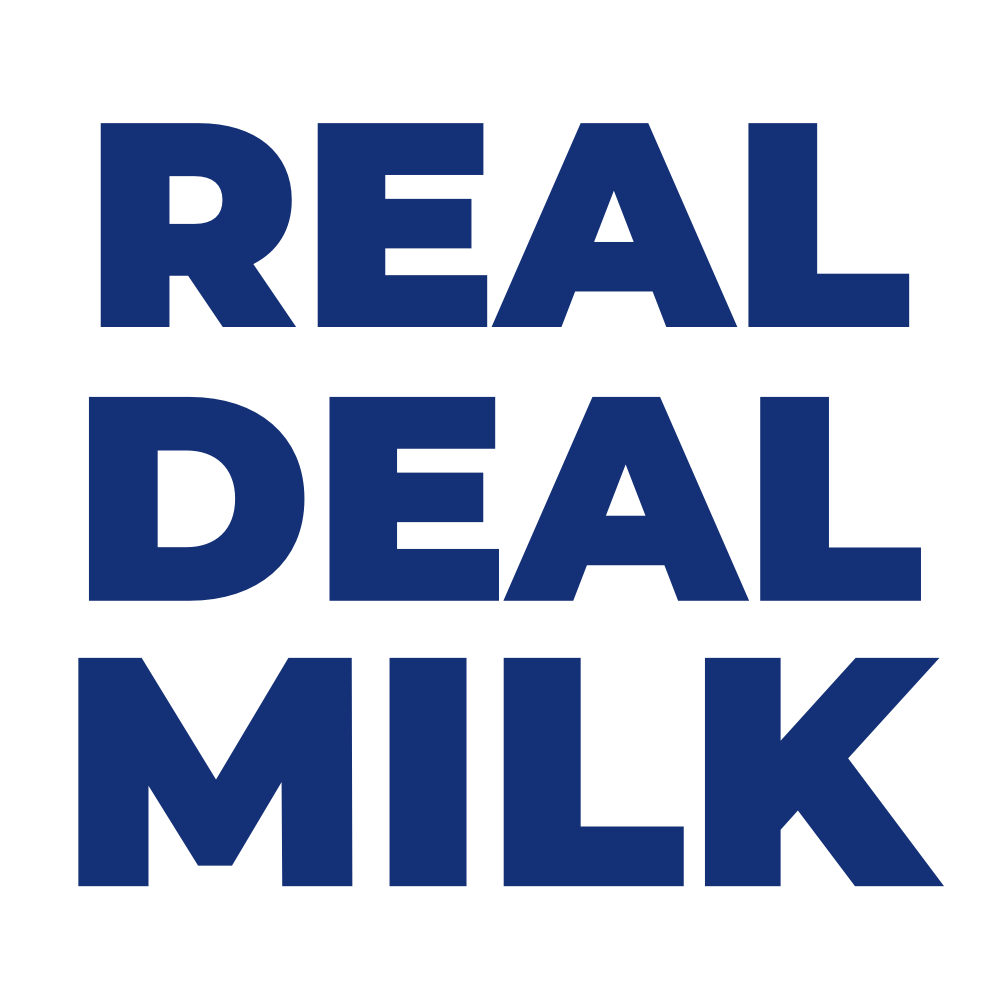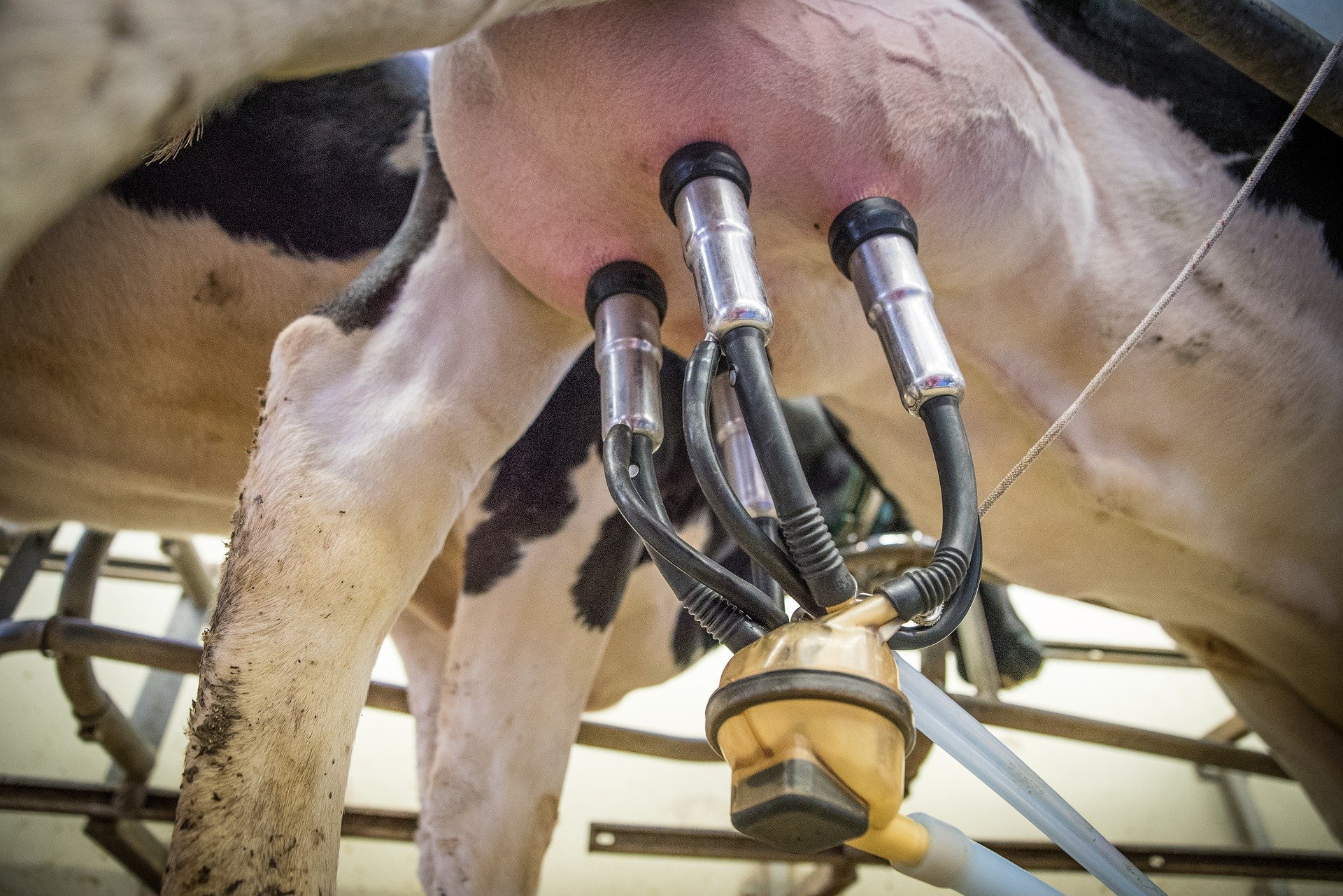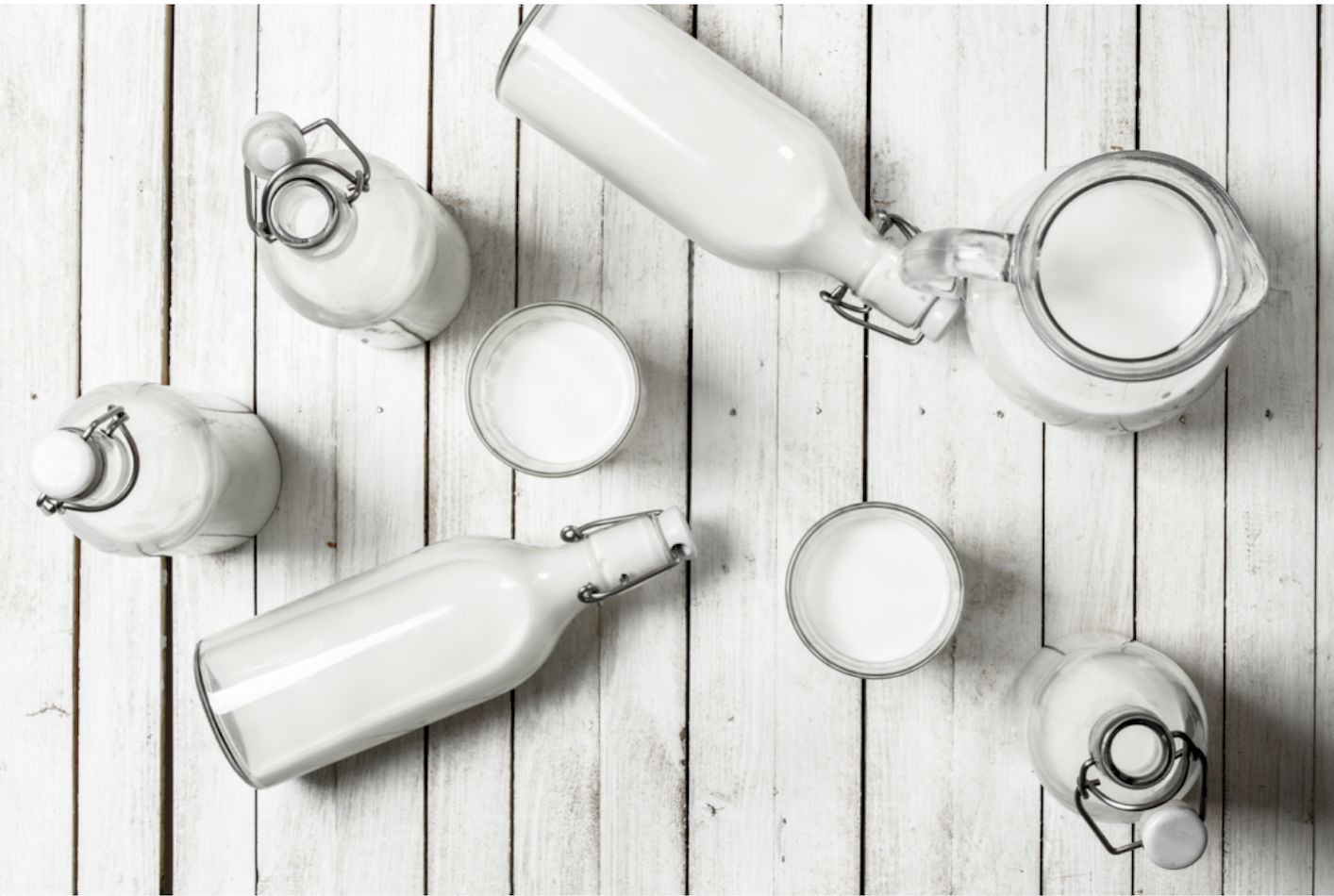The udder side of dairy farming
Cows udders don't spontaneously refill with milk.
Mammals produce milk for a reason: to feed their offspring. Yet humans have intercepted the milk between cow and calf, so we can soak our cereal and add creaminess to our coffee.
To meet our constant demand for milk, dairy cows go through a lot. Their genetics have been manipulated, they're constantly impregnated, and their calves are stolen from them moments after birth. All so farmers can squeeze out every last drop of their milk.
How much milk are we talking?
As dairy farming has intensified in the past 40 years, milk production has more than doubled (CIWF.a).
The most common cattle breed in Europe, the Holstein-Friesian, produces around 22 litres of milk a day due to selective breeding to increase their milk yield (CIWF.a). Without some human intervention, milk yields wouldn't be able to reach these high levels. Through selectively breeding the cows, their genetics have slowly been steered towards increased milk production. However, there are concerns that this selective breeding causes issues for the cows, such as subfertility, oversized or swollen udders and a decreased lifespan (European Commission. 2017).
The desire to increase milk yields puts such strain on the cows, causing them even more health problems.
Pregnancies = milk
A dairy cow's life is a continuous cycle of pregnancy.
To make milk, you need to have just given birth. So to produce as much milk as possible, dairy cows need to be pregnant as much as possible. Therefore, just as the candles are blown out on a dairy cow's first birthday, they are artificially inseminated (PETA). Once they've given birth nine months later, they will produce milk for the next ten months, but it only takes three months after birth for the cows to be inseminated again (CIWF.a). There's no rest at all, and the dairy cows are forced to produce a calf a year (CIWF.a) to ensure milk flow can be as continuous as possible.
After giving birth, there's no time for family bonding; within hours, the calf is ripped from its mother's side (CIFW.b).
A mother and calf usually form a strong bond, the calf suckling on its mother's milk for up to a year. Not on a dairy farm. Tearing the calf away from the mother just after birth is a traumatic experience. It even impacts the calf's physical and social development (CIWF.b).
Female calves follow in their mothers' footsteps, whereas male calves are sent to the slaughterhouse to become veal or beef. However, there is still a percentage of males calves that are just shot, with no other purpose. For example, in the UK 95,000 male calves are shot each year (CIWF.b).
Pumping up the hormones
Around 40 years ago, the EU banned the use of any hormones used to promote growth in animals (European Commission). However, the US has not followed suit. So if your milk is coming from a farm in the US, it's likely that on top of everything dairy cows go through, they're also being pumped full of growth hormones to increase their milk production (FDA).
It's no miracle cows produce so much milk; it's madness. Madness how much strain we put on these animals, intensively farming them for everything they can give us. As animal welfare becomes a concern in more and more consumers' minds, cellular agriculture can provide a solution. Saving cows from such a traumatic existence but creating plenty of milk at the same time.
References
CIWF.a. Farm animals; dairy cows. https://www.ciwf.org.uk/farm-animals/cows/dairy-cows/
CIWF.b Welfare issues for dairy cows. https://www.ciwf.org.uk/farm-animals/cows/dairy-cows/welfare-issues/
European Commission. Hormones in meat. https://ec.europa.eu/food/safety/chemical-safety/hormones-meat_en
European Commission. 2017. Overview report; welfare of cattle on dairy farms. Publications Office of the European Union. PDF.
PETA. Cow’s milk: a cruel and unhealthy product. https://www.peta.org/issues/animals-used-for-food/animals-used-food-factsheets/cows-milk-cruel-unhealthy-product/
FDA. Bovine Somatotrophin (bST). https://www.fda.gov/animal-veterinary/product-safety-information/bovine-somatotropin-bst



